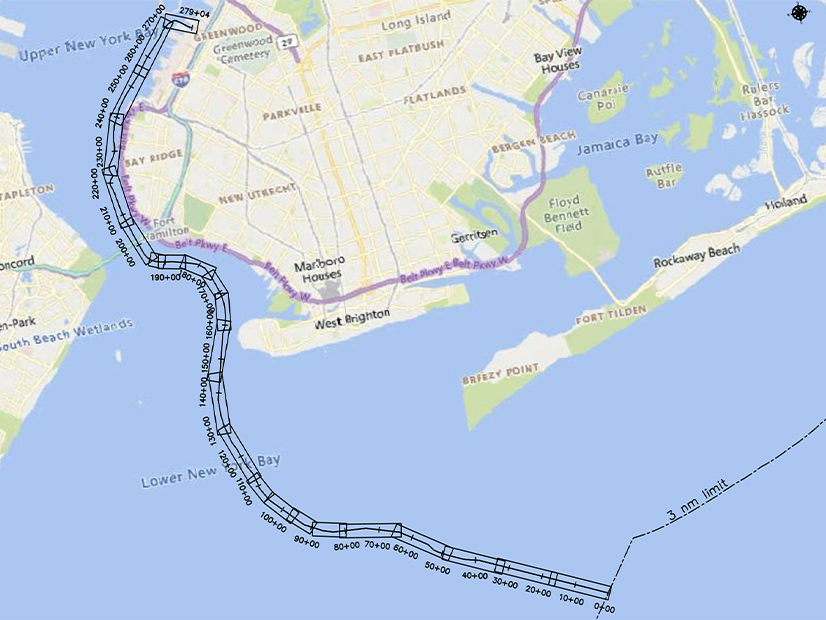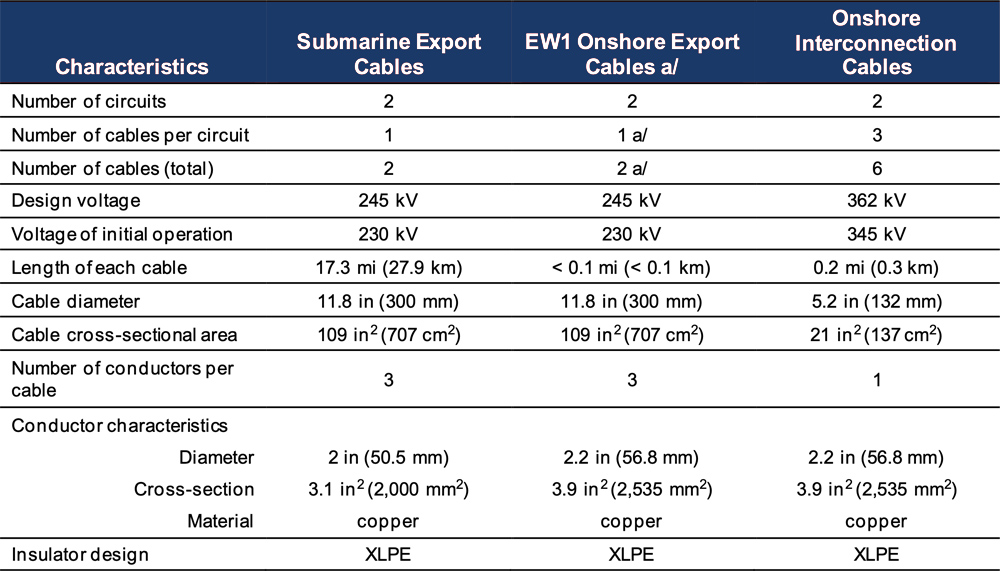
The first-ever offshore wind transmission project in New York will bring 816 MW from Empire Wind 1 right under Brooklyn streets — and has drawn no comment from local residents (21-T-0366).
Siting major new energy infrastructure in New York City is notoriously difficult and expensive. Equinor (NYSE:EQNR), which is managing the project on behalf of itself and partner BP, will likely pay half a billion dollars or more to lay 17.4 miles of twin submarine cables in state jurisdictional waters. But it is facing no opposition to its plans to bring the 230-kV lines ashore at the South Brooklyn Marine Terminal.
Only developer representatives, labor and industry interests, and academics spoke at a public hearing hosted by the New York Public Service Commission on Tuesday.
According to Mariah Dignan — regional director on Long Island for Climate Jobs New York, a statewide labor coalition representing 2.6 million workers — the project and its related onshore work will undoubtedly serve the public interest and is necessary to meet the state’s climate action goals, especially the 9,000-MW target for offshore wind energy by 2035. Dignan made her remarks Tuesday.
“In addition, the project and related onshore work and construction must be done with good union, family-sustaining jobs,” Dignan said. “We look forward to working with the applicant to make this clean energy economy a reality through a just transition for not only our workforce but also our communities.”
The 50/50 joint venture of Equinor and BP (NYSE:BP) also includes Empire Wind 2 and Beacon Wind 1. The three projects will collectively provide 3.3 GW of electricity, Harrison Feuer, director of public affairs in the state for Equinor Renewables U.S., said in a presentation at the hearing before it opened to public comment.
 The EW1 onshore export cables between the cable landfall and the onshore substation will consist of a three-core 230-kV HVAC bundle and are not expected to differ from the submarine export cables. | Empire Wind
The EW1 onshore export cables between the cable landfall and the onshore substation will consist of a three-core 230-kV HVAC bundle and are not expected to differ from the submarine export cables. | Empire Wind
The operations and maintenance base for all three projects will be situated in an industrial park adjoining the South Brooklyn terminal. “We do extensive environmental and social impact evaluations to minimize the effects on wildlife and local communities, and that happened long before we get started,” Feuer said.
The developers expect state permitting to conclude between the end of 2023 and beginning of 2024, when construction will then commence, said Joshua Verleun, Equinor manager for the permitting process in New York.
After landfall at South Brooklyn, the 230-kV export cables will be connected to an onshore substation to up the voltage to 345 kV for interconnection to the grid.
“When the cables make landfall, they will be pulled directly through the bulkhead to terminate into the onshore substation,” Verleun said. “From the onshore substation there is a short interconnection cable that runs along New York City streets and connects into the existing Con Edison Gowanus substation.”
The approval of the project’s transmission lines will be a critical milestone in its development, said Fred Zalcman, director of the New York Offshore Wind Alliance, a coalition of OSW developers, including Equinor, national environmental organizations, labor and academia.
“This project presents many good benefits to the electric grid of downstate New York, and one of the key benefits I see is its proximity to the New York City load center,” said Thomas Barracca, director of the Office of Economic Development at Stony Brook University, which runs a workforce development program for the OSW industry in New York. “In terms of environmental impact, the project has been very well conceived and thought out, and has obviously been vetted with a lot of stakeholders in the environmental community.”
The developers engaged with local fisheries, whose feedback helped inform decisions on how the project is made, and also worked closely with the U.S. Bureau of Ocean Energy Management and Department of Defense to mitigate any potential interference of coastal defense and radar, Feuer said.
“We are delighted that the cable connection would be going to Brooklyn,” said Adrienne Esposito, executive director of Citizens Campaign for the Environment, a statewide group with 140,000 members. “We all know that the greatest load of fossil fuel use is … in New York City and also on Long Island, and that’s why it’s so imperative that wind farms get connected to both of those areas.”


